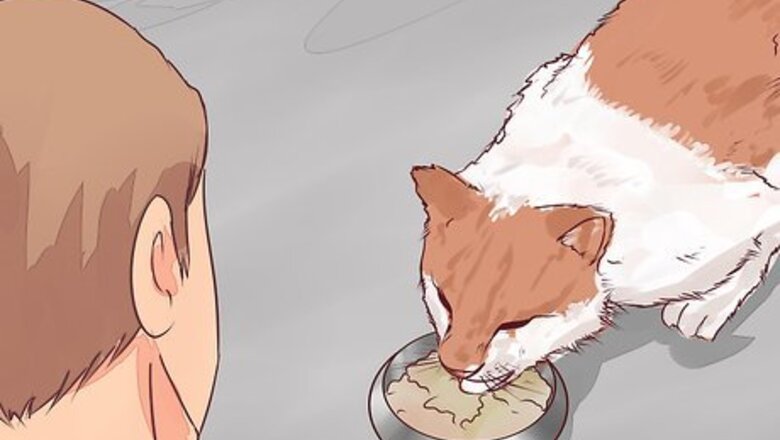
views
Assessing Your Cat's Physical Condition
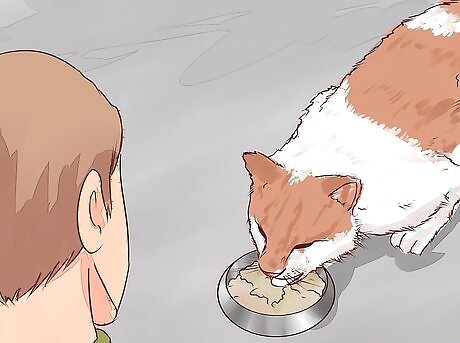
Consider your cat's weight and ability to eat. Food is essential to life. If the cat has pain (dental, arthritic, or abdominal are the most common in older pets) then it may inhibit her from eating because it hurts to get up and do so. Another example is the cat that eats but regularly vomits food back up. Either of these scenarios are a cause for worry and will result in the cat losing weight. Weight loss in itself is not an indication for euthanasia but if the cat's body score falls to around 1.5 / 5 the cat is likely to feel weak, and lacking in energy. If there is no prospect of her gaining weight, you must consider euthanasia. If the body score falls further, to 1/5 then it is time to let her go.
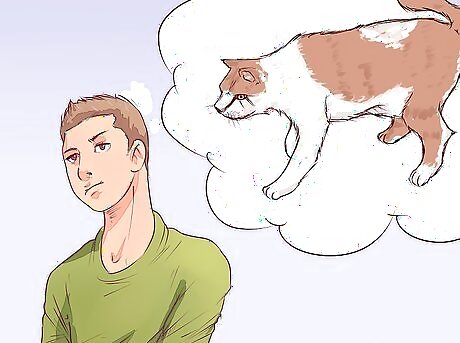
Determine your cat's body score. A body score is a simple way of assessing how fat or thin your cat is. It consists of a scale from 1 to 5, with 5 being obese and 1 emaciated. An ideal body score is around 3. Score 1: Ribs, spine, and pelvis are visibly sticking out, even at a distance. The cat has no body fat and looks starved and bony. Score 2: Ribs, spine, and pelvis are easily felt. Viewed from above, the cat has a distinct waist, and from the side the belly is tucked up. The cat looks thin. Score 3: Ribs and spine can be felt but not seen. The cat has a slight waist when viewed from above, and a level, but not saggy tummy from the side. Ideal. Score 4: Ribs and spine difficult to locate. Pear-shaped tummy from above and sagging down from the side. Can be described as chunky or stout. Score 5: Bony landmarks obscured by fat. Thick cover of fat over chest and tummy. Oval silhouette. Obese.
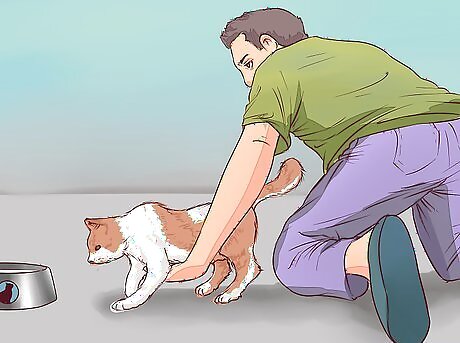
Assess whether the cat is able to walk to her water bowl. Elderly cats need to drink more than young, fit cats. This is because their kidney function often relies on drinking to flush toxins out of the system. The cat needs to be mobile enough to get up and walk to the water bowl, with minimum discomfort. Cats in pain will not get up unless it is essential. They are likely to wait longer between drinks and are prone to dehydration, which in turn puts a strain on their kidneys and makes them more likely to feel nauseous and increasing unwell from the build-up of toxins. Obviously, you can move the water bowl within reach, but the principle remains that it is a basic requirement for the cat to be mobile enough to walk a short distance without distress. If this is not the case then the pet's quality of life is in question and euthanasia should be considered.
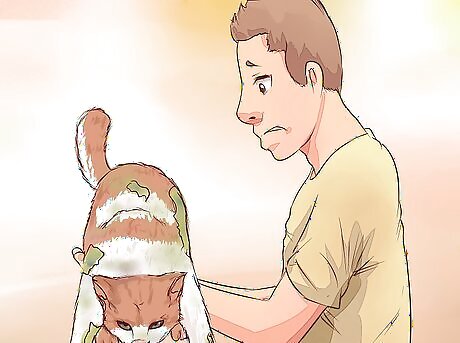
Take note if your cat starts soiling herself. Cats are proud, clean creatures. They have a basic need to keep themselves clean. If they are unable to keep themselves clean, then the cat's dignity suffers and keeping them alive is morally questionable. Of course a one off or occasional accident is no reason to act, but if the cat either has intractable diarrhea which catches her off-guard, or lacks bladder control such that her coat starts to smell, this causes the cat significant distress. It is also a cause for concern if a cat that used to be house trained starts soiling in the house. However, before you decide she has to be euthanized, speak to the vet about whether pain relief is appropriate, or look into changing her litter box to one with lower sides. Cats with arthritis can find it difficult to jump into steep sided boxes and may take the easier route of using the floor. Likewise, stiff achy joints can make the cat less willing to walk to another room to the tray. A trial with pain relief meds may be all it takes to clear up this unseemly habit.
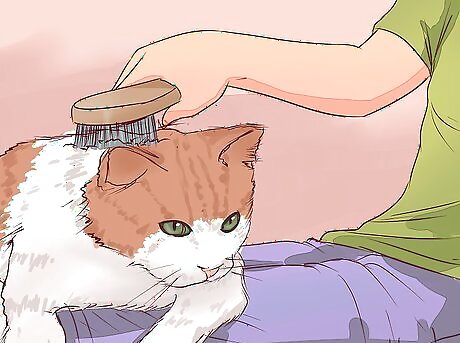
Consider your cat's ability to groom herself. Lack of grooming could be a sign of a stiff back, or even that your cat is sleeping more and not devoting the necessary to coat care. If this is your cat's only quirk, don't panic, the chances are she's okay for a while yet. However, you can also look at things the other way round. A cat with a glossy, well-kept coat is a cat that still has a pride in her appearance and is well enough to do something about it. If this describes your cat, then it's likely she isn't ready to depart just yet. Of course, if your cat is having difficulty grooming herself, this is one area where you can make a big difference. Giving an elderly, unkempt cat a comb and brush over can make her feel much better about herself.
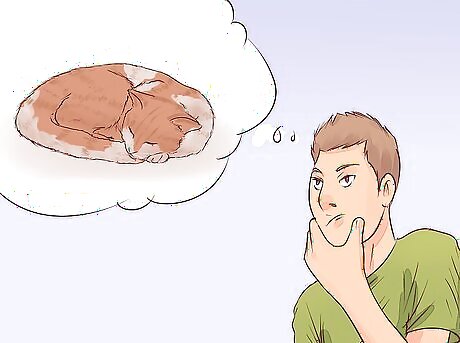
Determine whether your cat is able to rest without pain. This is a big one. It is a basic necessity that the cat can sleep and rest without being disturbed by pain. A cat in pain is more likely to be restless, and show tell-tale signs such as swishing her tail, or resting with her ears drawn back. Pain also causes tension in the muscles and the cat is more likely to have a hunched-up, "tight" appearance, rather than lying on her side with her legs extended. Cats in pain are also more short-tempered and grouchy. So be alert for changes in character from sweet-tempered to hissy and spitty. Of course pain comes in different intensities and different cats have differing tolerances to pain. When deciding whether it's time for euthanasia the underlying question to ask yourself is if the pain means she spends more time feeling unwell, than she does getting pleasure out of life.
Consulting a Vet
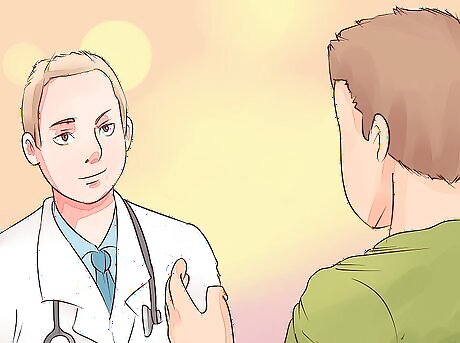
Discuss the matter with your vet. Don't forget your vet is there to advise you. The ideal situation is if your cat has seen the same vet for years, because she has followed the cat throughout her life and is aware of her normal appearance and behaviors. The veterinarian will also know you, and this makes it easier to have a full and honest discussion about what is best for your pet.
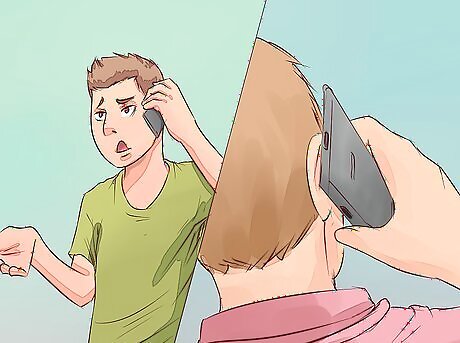
Call your vet at the first sign of concern. If your cat is on regular medication and the vet is familiar with him, you should ring and ask to speak to the vet at the first sign of concern. The vet may suggest a visit to the clinic, or suggest a change of medication or a different dose. The vet will try to find a solution to your pet's problems before the topic of putting the cat down is even broached. When you first become concerned, speaking to a professional does not commit you to having the pet euthanized - it simply gives your pet the best chance of finding a medical solution.
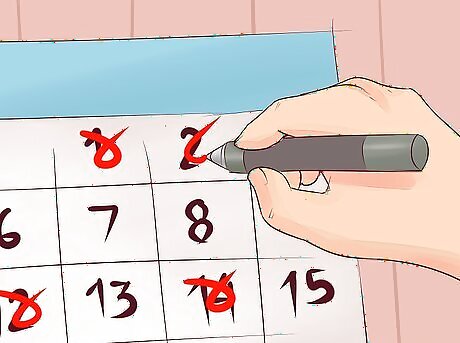
Set up an appointment to have your cat physically examined. If your pet has not been to the vet for some time and you are growing concerned about their physical condition, book an appointment for a physical exam. Again, this is not committing you to euthanasia but it will give to vet an opportunity to conduct a full examination and give you time to discuss your cat's health in person. This allows you to get an honest opinion about the cat's health, and if it isn't time to let her go it provides a bench mark against which to measure any deterioration later on.
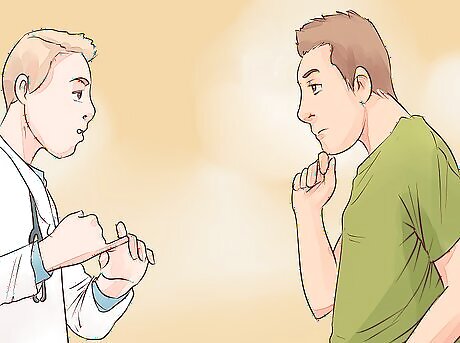
Know what signs the vet is looking for when considering euthanasia. There are two elements in making a decision about euthanasia. The first is the physical side, and the second is the mental. The vet's role is to check for signs of ill health or pain that mean the animal is suffering, or about to suffer, and to advise you on the options for treatment. Sadly, euthanasia is sometimes considered an appropriate "treatment" if it is not possible or practical to alleviate the cat's suffering through medications or other means. During the health check the vet will assess things such as the cat's hydration levels, body condition, and signs of pain. She will also trouble shoot for conditions such as anemia or cancer that might indicate that the cat is unlikely to respond to treatment. She will assess the cat's general mobility and state of mind.
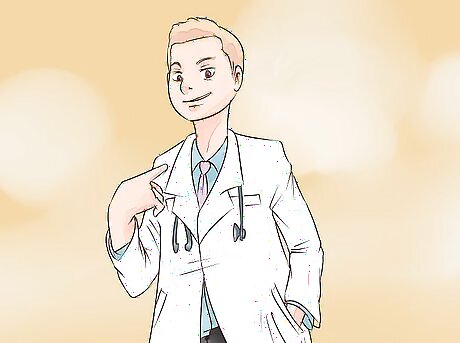
Understand that the vet only wants what's best for your cat. It is the veterinarian's job to ensure an animal does not suffer, and if the cat has a problem that is badly affecting her quality of life and there is little chance of improvement, then the vet will help you understand this and guide you towards making the best decision.
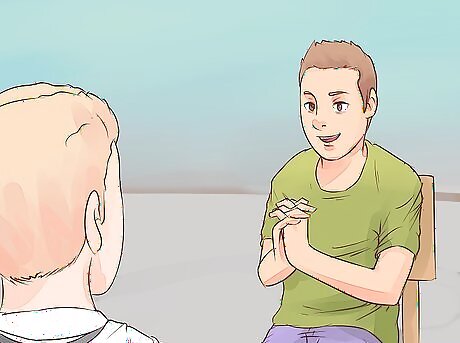
Be honest with the vet about the cat's condition. In some cases, cats who are feeling poorly at home will seem to perk up at the vet's clinic. This is simply a result of stress. Be aware this can happen, and the vet knows it, so be honest with the veterinarian and explain how the cat acts at home. She will appreciate the honesty and help you make the best decision. Keep in mind that certain factors, such as senility, are often best judged by the owner who lives with the pet, rather than the vet in a ten minute consultation.
Making a Decision
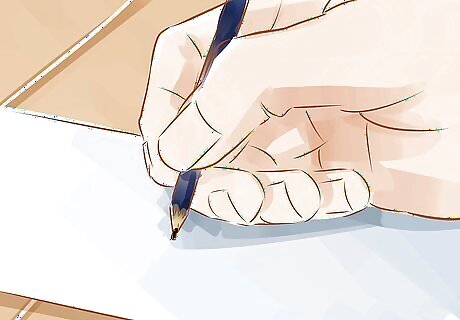
Make a list when you are calm. While the cat is still well, make a list of things that would be unacceptable to you if the cat started/stopped doing them. The list could include things like no longer grooming herself, no longer eating, or soiling on carpets and furniture regularly. Having this list will help to make it easier for you to decide if your cat starts doing any of these things.

Find the tipping point. Life is a balancing act. Sometimes things go well, other times they go badly, but everything should balance out in the end. Your cat's life is a bit like this. An elderly or sick cat will have good days and bad days, but if the overall balance is positive and the "bad" is never extreme pain, then it is reasonable to carry on. However, there comes a time when the bad outweighs the good. The tipping point may occur when the cat stops responding to pain medications, or you notice a deterioration in house training. Although it varies from cat to cat, a point is usually reached beyond which quality of life becomes unacceptable. Once this tipping point has been reached, euthanasia may be the kindest thing for your cat.
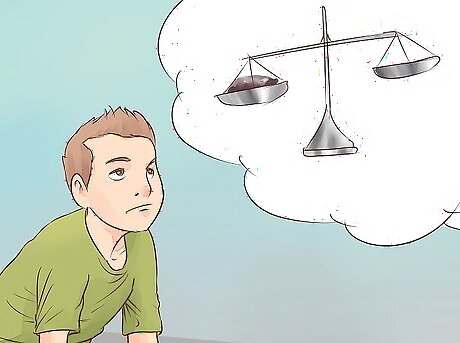
Try to balance all the factors. It is the nature of hard decisions that they are not clear cut. Continuing with the scales analogy, it may not be one large thing that tips the balance (such as the cat having a stroke) but it may be lots of smaller things added together (such as the cat no longer grooming, soiling herself, and losing weight).
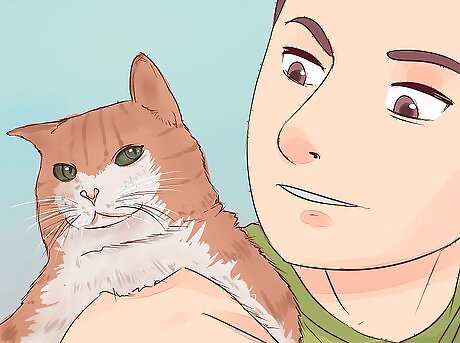
Consider your cat's quality of life. "Quality of life" are three words much talked about in the context of animal euthanasia. As well as physical factors such as pain, quality of life can be quite an abstract idea that includes factors such as the cat's enjoyment of life. Considering the cat's quality of life will help you to reach a decision about what is moral and humane.
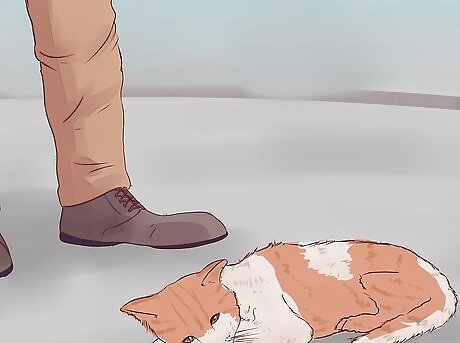
Prioritize quality of life over quantity of life. A useful concept to keep at the back of your mind is "quality of life, not quantity of life." If you decide to keep your cat alive, it's important to ensure that her life is worth living. If she is in constant pain, it would be kinder to put her down, as her quality of life is non-existent.
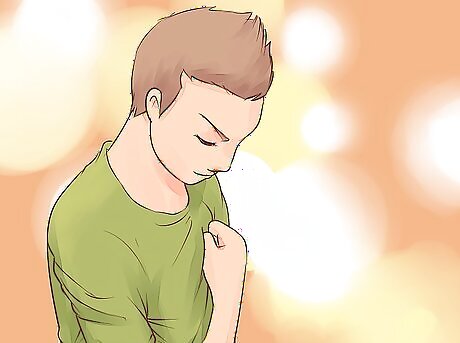
Trust your instincts. Trust your instincts is sage advice when it comes to euthanasia. You know your pet, and chances are if you think she is suffering, then she is. No owner wants to say goodbye, but it comes down to putting the cat's best interests first, and your reluctance to let go second. You may just know when it is time.
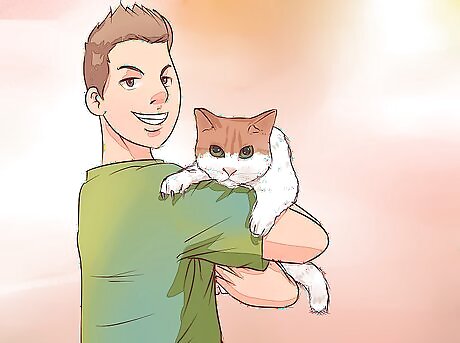
Don't feel guilty about making the right decision. The first thing to remember is that by deciding to euthanize your cat, you are not killing her, or playing God. These ideas are not helpful. In fact, what you are doing is making a positive decision to prevent the cat from unnecessary pain, discomfort and distress. The second thing to remember is that it is better to let the cat pass early, rather than do nothing and watch the cat deteriorate. Owners do not consider euthanasia lightly, and it is highly likely that if the thought of euthanizing your cat has occurred to you, then your cat is close-to, or already in distress. The third thing to remember is that cats show you love and compassion throughout their life, and when their quality of life fails, it is an unselfish decision on your part to say goodbye and bring that life to a dignified end.




















Comments
0 comment